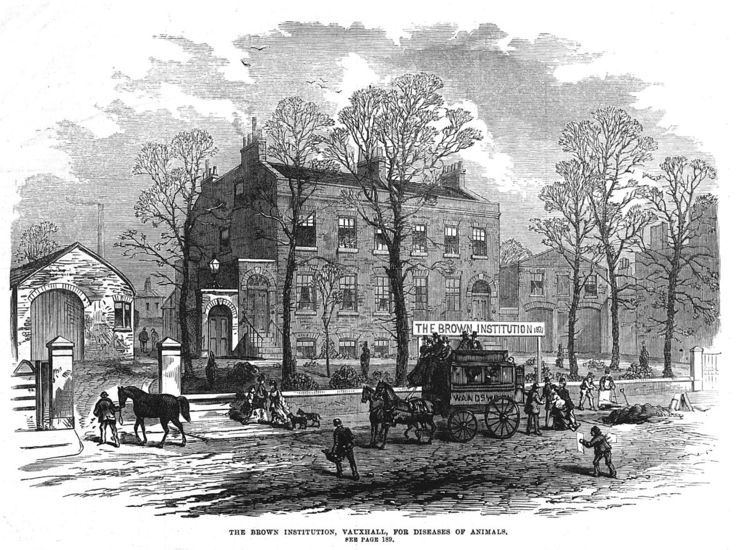 | ||
The Brown Animal Sanatory Institution sometimes referred to as the Brown Institution was an institute for veterinary research laboratory founded in 1871 in London, England. It was established from a sum of £20000 left by Thomas Brown in his will. It was intended to be a centre for veterinary research and its early researches were mainly in disease and physiology. Seven out of its eight directors became Fellows of the Royal Society. The institute located at Wandsworth road was destroyed by German bombs in 1944. In the late 1870s it became the centre of attention and the target of the anti-vivisection movement in England.
Among the researchers who worked at the institute was a Viennese scientist, Emanuel Edward Klein, sometimes considered the father of British bacteriology. The research he and his colleagues conducted at the Institution were published as in 1873 as the Handbook for the Physiological Laboratory along with John Burdon-Sanderson, Michael Foster, and Thomas Lauder Brunton. Their experiments included vivisection of animals, and following widespread protests, led to an enquiry in 1875, the Royal Commission on Vivisection for Scientific Purposes, chaired by Lord Cardwell and which resulted in the establishment of the Cruelty to Animals Act 1876. Activists writing in the press pointed out that a founding principle, "kindnes to animals is a general principle of the Institution" was hardly followed.
